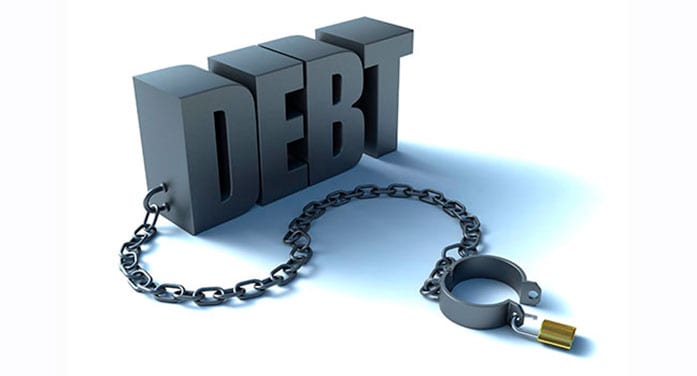 If you think the federal government’s so-called historic spending on a national child-care scheme is big, wait until you hear how much the government is spending to cover its debt interest costs.
If you think the federal government’s so-called historic spending on a national child-care scheme is big, wait until you hear how much the government is spending to cover its debt interest costs.
In its 2021 budget, the Justin Trudeau government is promising to spend $30 billion over five years on a national child-care program. That’s a tonne of money considering we couldn’t afford it pre-pandemic.
But it’s still five times less than what the feds will have to pay in debt interest charges over that period, which will total $153 billion by 2026. That’s nearly $4,000 per Canadian. And instead of that money going towards health care or lower taxes, it’s going into the pockets of bond fund managers.
Assuming the feds can hold the line on budgeted spending – a generous assumption given the government’s track record – the deficit by the end of 2025 will still be $30 billion. The interest charges that year will be $39 billion. That means the borrowing to make up the budget gap couldn’t even cover the interest payments.
On top of this interest, taxpayers will have to eventually pay back the $1,000,000,000,000 – one trillion – debt tab.
It’s no wonder economists’ spidey senses are tingling from this debt-fueled spending spree.
The University of Calgary’s Jack Mintz noted that Finance Minister Chrystia Freeland “is rolling the dice that never-ending deficits will be manageable.” Mintz added that “just a one-point increase in interest rates would then increase the annual deficit by close to $5 billion.”
In the few months since the fall economic statement was released, the private sector has revised its 10-year government bond rate forecast up about half a percentage point. What happens if low interest rates inch up?
Mintz isn’t the only expert raising concerns.
“Are we really going to make this assumption that interest rates are going to stay static for the next 10 or 20 years?” said David Rosenberg, chief economist and strategist at Rosenberg Research, on BNN Bloomberg. “I just find so many people have short memories against what happened in the 1970s into the 1980s, and then all the tough choices and the hardship to get our fiscal situation back into some mode of stability.”
Former finance minister Paul Martin knows a thing or two about tough choices. After all, he cut government spending by about 10 per cent during his mission to erase the federal deficit in the 1990s. He also knows a thing or two about the dangers of debt binges.
“The debt and deficit are not inventions of ideology,” said Martin during his budget speech in 1995. “They are facts of arithmetic. The quicksand of compound interest is real.”
The provinces also learned their lesson the hard way.
“When [Ralph] Klein became premier, government debt daily snatched money away from patients and students due to escalating interest costs,” said government finance expert Mark Milke in his book Ralph vs. Rachel. “Between 1985 and 1993 in Alberta, the cost of interest on Alberta’s growing debt was $7.2 billion, equivalent to two full years of what the province spent on health care just a few years previous.”
Saskatchewan had to come to terms with its deficit addiction by enduring “a lot of pain,” according to former finance minister Janice MacKinnon who closed 52 hospitals across the prairie province.
“We left a fiscal situation in Saskatchewan until it was a crisis and so we had to make dramatic cuts to fundamental programs and raise taxes to get out of the situation,” said MacKinnon.
The moral of the story is that the best time to put out a fire is before it spreads. But by betting the house that interest rates will stay low forever and nearly doubling Canada’s debt in a few short years, Budget 2021 is adding fuel to the fire.
Franco Terrazzano is the Federal Director of the Canadian Taxpayers Federation.
Franco is one of our Thought Leaders. For interview requests, click here.
The views, opinions and positions expressed by columnists and contributors are the authors’ alone. They do not inherently or expressly reflect the views, opinions and/or positions of our publication.
© Troy Media
Troy Media is an editorial content provider to media outlets and its own hosted community news outlets across Canada.


